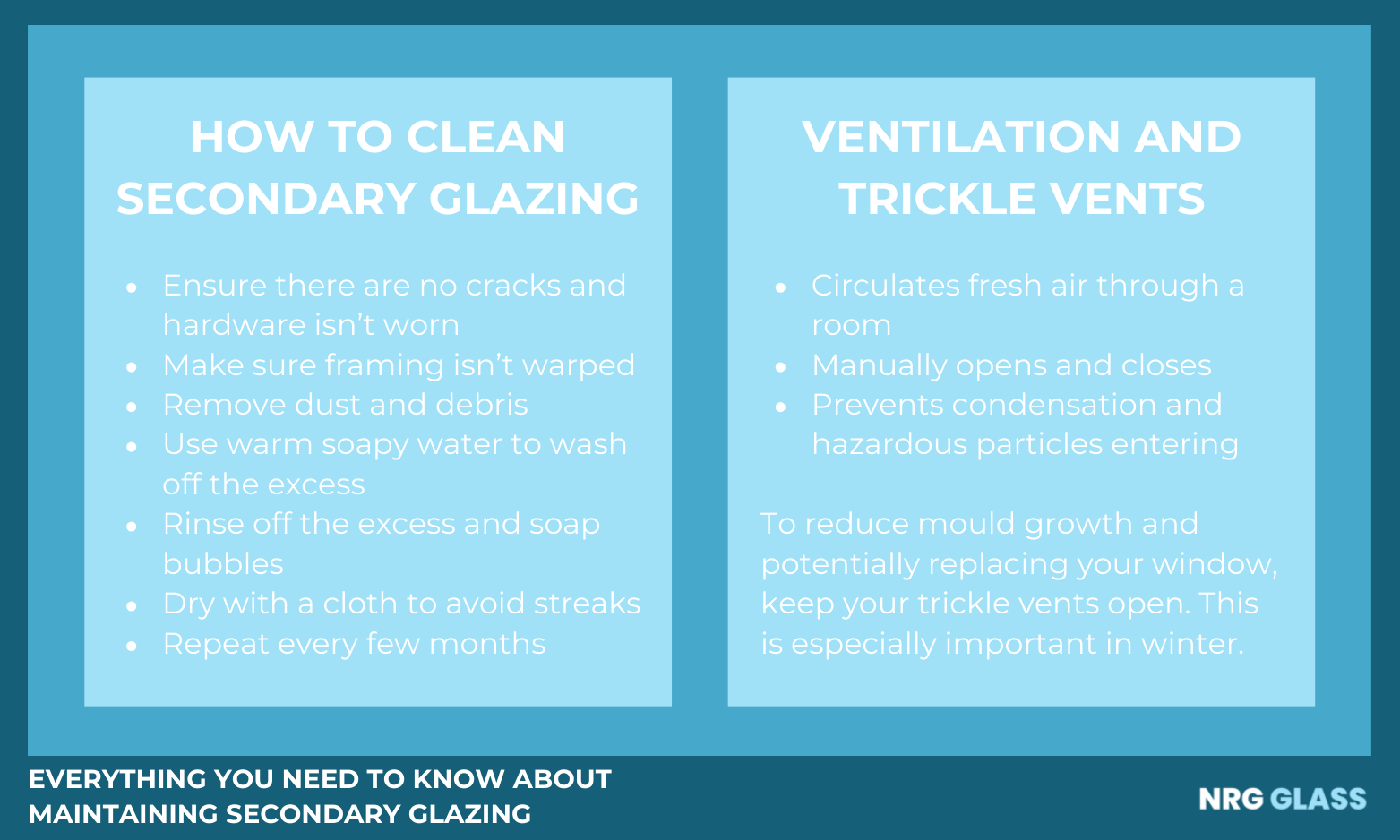Everything you Need to Know About Maintaining Secondary Glazing
Posted on 21st February 2024 at 14:01
Secondary glazing is an internal secondary window. It works alongside your existing window and prevents the need to replace it, but while there are some major benefits of secondary windows, there’s still the need for regular maintenance.
In this handy guide, we’ll discussing the following:
How long does secondary glazing last?
How to clean secondary glazing
Sealing secondary windows
Secondary glazing repairs
Removing secondary glazing
Ventilation and trickle vents in winter
How Long Does Secondary Glazing Last?
The longevity is typically between 10 to 25 years, which is dependent on the preservation of your secondary glazing. This can easily be prolonged by regularly maintaining the windows. But how do you maintain secondary glazing and what important factors should you consider?

How to Clean Secondary Glazing:
Secondary glazing must be cleaned every few months to prevent excessive dirt build-up. This allows the glazing to look its best and helps with energy efficiency and insulation.
Here is how to clean secondary glazing:
Remove dust and debris
Use warm soapy water to wash off the excess
Rinse off the excess and soap bubbles
Dry with a cloth to avoid the formation of streaks
Sealing Secondary Windows
When installing and refitting secondary glazing, you want to ensure you are perfectly sealing the secondary window. This prevents moisture from entering any small gaps and causing mould growth. Sealants need to be weatherproof and highly UV-resistant as these factors will wear the sealant down very quickly.
For optimal performance and longevity, the sealant and frame material must be compatible. You can either ask your supplier for confirmation or do a bit of digging to make sure the sealant is safe for your secondary window.
Secondary Glazing Repairs
Secondary glazing, like any window system, may require repairs over time. There are numerous types of secondary glazing repairs, ranging from glass replacements to hardware or frame replacements. If your panels are cracked, framing is warped, or the hardware is worn or damaged, you should tackle these issues promptly for the longevity of your secondary glazing.
Removing Secondary Glazing
Maintaining your glazing may require the removal of the panels. When removing secondary glazing, you can simply lift them vertically within their frame until the bottom clear edge is visible.
Always ensure you are careful when removing the panels to limit the risk of damage, otherwise, you may need a whole new window. If your panel is large, you may want to have assistance before attempting to move or replace it.
Ventilation and Trickle Vents in Winter
A trickle vent is a device that circulates fresh air naturally through a room. They are manually opened and closed to allow the prevention of condensation and hazardous particles. It is recommended your trickle vents are always open to achieve optimal circulation regardless of the weather. However, your trickle vents in winter must be open to prevent condensation and mould growth.
Low-Maintenance Secondary Glazing at NRG Glass
So, how can you maintain your secondary glazing? Ensure you are careful when removing, replacing and installing your panels. Remember to regularly clean them and keep your trickle vents open so there is no dirt buildup, condensation or mould growth.
If you have any questions about maintaining your secondary glazing or are in the market for ones, contact our experienced and qualified team today. If you’re interested to learn more about secondary windows, read our in-depth guide.
Tagged as: Secondary Glazing
Share this post:

